Home>Articles>How To Store Fresh Strawberries In The Refrigerator
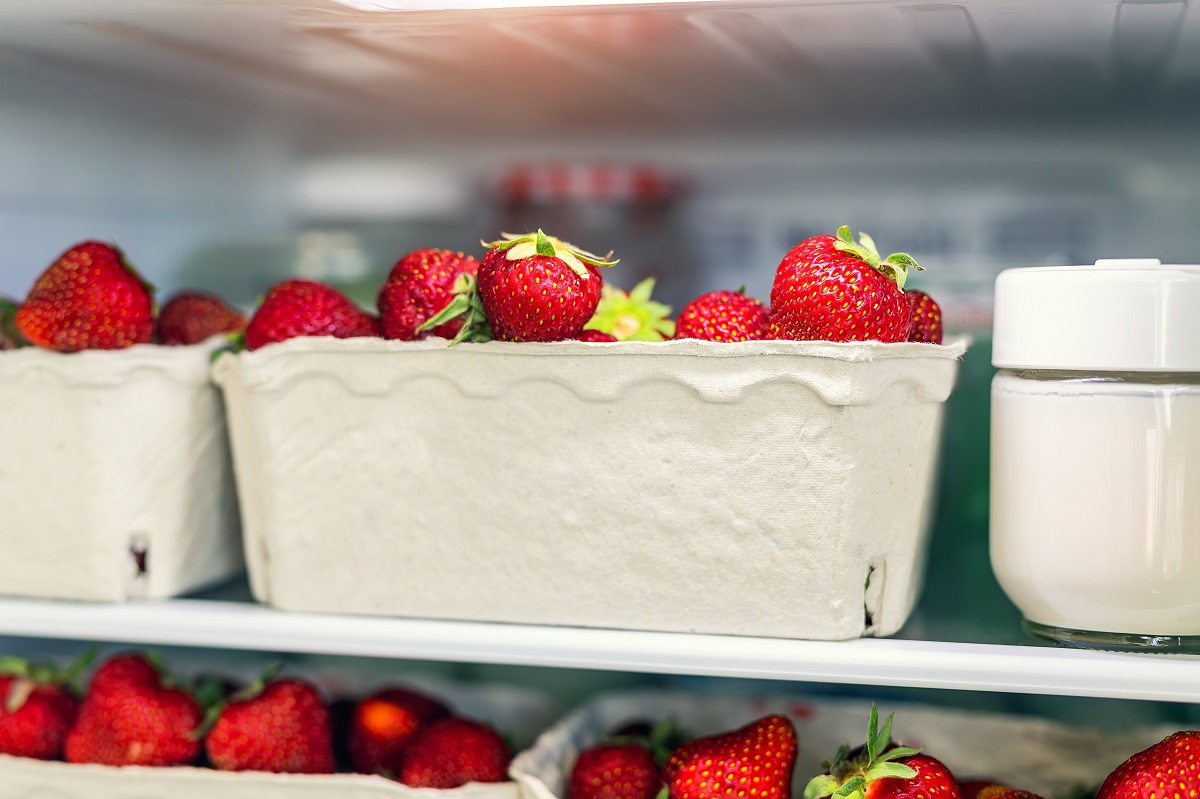

Articles
How To Store Fresh Strawberries In The Refrigerator
Modified: February 24, 2024
Learn the best method for storing fresh strawberries in the refrigerator to keep them fresh and delicious for longer. Find the step-by-step guide in this informative article.
(Many of the links in this article redirect to a specific reviewed product. Your purchase of these products through affiliate links helps to generate commission for Storables.com, at no extra cost. Learn more)
Introduction
Strawberries are a delightful and refreshing fruit that many people enjoy during the warmer months. Whether you pick them yourself or purchase them from a local market, it’s important to know how to properly store fresh strawberries to ensure they stay fresh and delicious for as long as possible.
When it comes to storing strawberries, the refrigerator is your best friend. With the right techniques and containers, you can extend the shelf life of your strawberries and enjoy their sweet and juicy flavor even days after purchase.
In this article, we will guide you through the process of selecting, preparing, and storing strawberries in the refrigerator, as well as provide tips on how to maximize their shelf life. We’ll also touch on using frozen strawberries as a convenient alternative. So, let’s dive in and discover the secrets to storing fresh strawberries!
Key Takeaways:
- Properly storing fresh strawberries is essential for maintaining their flavor and longevity. Select ripe, vibrant strawberries, store them in the coldest part of the fridge, and avoid washing until use to maximize their shelf life.
- Frozen strawberries are a convenient alternative when fresh ones are unavailable. Thaw them slowly in the fridge, adjust recipes for their softer texture, and use them in various dishes for a delicious and versatile option.
Read more: How To Store Fresh Strawberries
Selecting Fresh Strawberries
When it comes to selecting fresh strawberries, it’s important to choose ones that are ripe, plump, and vibrant in color. Here are some tips to help you pick the best strawberries:
- Color: Look for strawberries that have a bright red color. They should be uniformly colored, without any green or white patches.
- Firmness: Gently press on the strawberries to check for firmness. They should have a slight give, but not be too soft or mushy.
- Fragrance: Take a whiff of the strawberries. They should have a sweet and aromatic scent. Avoid berries that have no smell or a sour odor.
- Size: While size doesn’t necessarily indicate quality, larger strawberries tend to be sweeter and juicier.
- Stems: Examine the stems of the strawberries. They should be fresh and green, indicating that they were recently picked.
If possible, try to purchase strawberries that were grown locally or at a nearby farm. Locally grown strawberries are often fresher and have a better flavor compared to those that have traveled long distances.
It’s also worth noting that organic strawberries, which are grown without the use of pesticides, can be a great option for those who prefer to avoid chemicals in their produce.
By selecting the freshest strawberries, you set the foundation for storing them properly and enjoying their optimal flavor and texture.
Preparing Strawberries for Storage
Before storing strawberries in the refrigerator, it’s important to properly prepare them to prolong their freshness. Here are some steps to follow:
- Inspect the berries: Take a close look at the strawberries and remove any that are overripe, bruised, or moldy. These berries can spoil the rest of the batch quickly, so it’s best to separate them.
- Do not wash yet: It may be tempting to wash the strawberries right away, but it’s not recommended. Moisture can promote the growth of mold and cause the berries to spoil faster. Instead, wait until you’re ready to consume or use the strawberries before washing them.
- Remove the stems: Using a paring knife or your fingers, gently remove the green stems from the strawberries. This step is optional, but it can make the berries easier to handle and prepare for various dishes.
- Leave them whole: Unless you plan to use the strawberries in a specific recipe that requires them to be sliced or crushed, it’s best to store them whole. Cutting the berries exposes more surface area, which can lead to faster spoilage.
By following these simple steps, you can ensure that your strawberries are ready for storage and maintain their freshness for a longer period of time.
Best Containers for Storing Strawberries
When it comes to storing strawberries in the refrigerator, the choice of container is crucial to maintain their freshness. Here are some of the best containers for storing strawberries:
- Plastic Containers: Plastic containers with tight-fitting lids are a popular choice for storing strawberries. Look for containers that are specifically designed for fruit storage, as they often have vents or holes to allow for proper air circulation.
- Produce Bags: If you prefer a more eco-friendly option, consider using reusable produce bags made of breathable materials, such as cotton or mesh. These bags allow for air circulation while protecting the strawberries from moisture and potential mold growth.
- Glass Jars: Glass jars with airtight lids can also be used for storing strawberries. Make sure the jars are thoroughly cleaned and dried before use. Glass jars provide a clear view of the berries and can be a great option if you want to showcase your fresh strawberries.
- Paper Towels: Another option is to line a container with paper towels before placing the strawberries inside. The paper towels help absorb excess moisture and can help extend the shelf life of the strawberries.
Regardless of the container you choose, it’s important to ensure that it is clean and dry before storing the strawberries. Any residual moisture or contaminants in the container can compromise the freshness of the berries.
Remember to avoid using plastic bags for long-term storage, as they can trap moisture and accelerate spoilage. It’s best to opt for containers that allow for proper air circulation to keep your strawberries fresh and flavorful.
Store fresh strawberries in the refrigerator in a single layer on a paper towel-lined container to prevent moisture buildup and mold growth. Avoid washing them until ready to eat to prolong their shelf life.
Storing Strawberries in the Refrigerator
The refrigerator is the ideal place to store fresh strawberries, as it helps to slow down the ripening process and preserve their flavor. Follow these steps to store strawberries in the refrigerator:
- Prep the berries: Make sure the strawberries are clean and dry before storing them. If they need to be washed, do so right before you plan to use them, as excess moisture can lead to spoilage.
- Layer the container: Line your chosen container with a paper towel or two. This will help absorb any excess moisture and keep the strawberries fresh for longer.
- Arrange the strawberries: Place the strawberries in a single layer in the container, with the stem ends facing down. Avoid overcrowding the container to allow for proper air circulation.
- Close the lid: Seal the container or cover it with plastic wrap to create a tight seal. This will help prevent any odors from contaminating the strawberries and maintain their freshness.
Once the strawberries are properly stored in the refrigerator, they can last for up to 1-2 weeks. However, it’s worth noting that strawberries are best enjoyed within the first few days of purchase when they are at their peak flavor.
During storage, be sure to check the strawberries regularly for any signs of spoilage, such as mold or mushiness. Discard any berries that show signs of decay to prevent them from spoiling the rest.
If you have a large batch of strawberries, storing them in multiple containers can be beneficial. This way, if one batch starts to spoil, it won’t affect the entire supply.
Remember that the refrigerator is a cool and moist environment, so it’s important to minimize the strawberries’ exposure to moisture. Keep them away from any sources of water or excessive condensation to prevent them from becoming excessively damp.
By following these proper storage techniques, you can enjoy fresh and delicious strawberries for longer periods of time.
Read more: How To Store Strawberries In Refrigerator
Tips for Maximizing Shelf Life
To maximize the shelf life of your stored strawberries and keep them fresh and delicious for as long as possible, consider these helpful tips:
- Don’t wash until use: As mentioned earlier, avoid washing strawberries until you’re ready to consume or use them. Moisture can cause the berries to spoil faster, so it’s best to keep them dry until needed.
- Remove spoiled berries: Check the container regularly and remove any strawberries that show signs of spoilage, such as mold or mushiness. This will help prevent the spread of decay to the remaining strawberries.
- Store in the coldest part of the refrigerator: Place your container of strawberries in the coldest part of the refrigerator, typically the back or bottom shelf. This will ensure that they are exposed to consistent cool temperatures.
- Avoid direct contact with cold air: While it’s important to store strawberries in a cool environment, direct contact with very cold air can cause them to freeze and become mushy upon thawing. To prevent this, store them away from any vents or extremely cold spots in the refrigerator.
- Keep away from ethylene-producing fruits: Ethylene is a gas produced by certain fruits, such as apples, bananas, and citrus fruits, which can accelerate the ripening process of strawberries and cause them to spoil faster. Keep your strawberries separate from ethylene-producing fruits to prolong their shelf life.
- Don’t remove the stems prematurely: It’s best to leave the stems intact until you’re ready to use the strawberries. Removing the stems prematurely can cause the berries to lose moisture and spoil more quickly.
- Avoid refrigerating overripe strawberries: Overripe strawberries are more prone to spoilage, so it’s best to consume them or use them for immediate purposes rather than refrigerating them for extended periods.
By following these tips, you can extend the shelf life of your strawberries and enjoy their sweet and juicy flavor for a longer time.
Using Frozen Strawberries
Frozen strawberries are a convenient option when fresh strawberries are not in season or are not readily available. They can be used in a variety of ways, from smoothies and desserts to sauces and jams. Here are some tips for using frozen strawberries:
- Thawing strawberries: Before using frozen strawberries, it’s important to thaw them properly. The best way to thaw frozen strawberries is to transfer them to the refrigerator and let them defrost overnight. This slow thawing process helps preserve their texture and flavor.
- Quick thawing: If you need to thaw the strawberries quickly, you can place them in a sealed bag and submerge them in a bowl of cold water. Change the water every 30 minutes until the strawberries are fully thawed. Avoid using hot water, as it can affect the texture and quality of the strawberries.
- Using in recipes: Once the frozen strawberries are thawed, they can be used in various recipes. They are perfect for adding to smoothies, baking into muffins or cakes, or making a delicious strawberry sauce.
- Adjusting recipes: Keep in mind that frozen strawberries may have a softer texture compared to fresh strawberries. Adjust your recipes accordingly to account for the additional moisture in the thawed berries.
- Store the leftovers: If you have any leftover thawed strawberries, you can store them in an airtight container in the refrigerator for a few days. However, they are best used immediately for optimal taste and texture.
Frozen strawberries can be a great alternative when fresh strawberries are not readily available. They retain much of the flavor and nutritional value of fresh strawberries, making them a versatile ingredient in your kitchen.
Whether you’re making a refreshing smoothie, a fruity dessert, or a homemade strawberry jam, frozen strawberries can be a convenient and delicious option to satisfy your strawberry cravings.
Conclusion
Properly storing fresh strawberries is essential to ensure their longevity and maintain their flavor. By following the tips and techniques outlined in this article, you can extend the shelf life of strawberries and enjoy their sweet and juicy taste for longer periods of time.
Start by selecting the freshest strawberries possible, choosing ones that are vibrant in color, firm to the touch, and have a sweet fragrance. Take care when handling and preparing the berries, removing any spoiled ones and avoiding washing them until just before use.
When it comes to storing strawberries, opt for the best containers that allow for proper air circulation while protecting the berries from moisture. Plastic containers, produce bags, glass jars, or containers lined with paper towels are all excellent options.
Remember to store the strawberries in the coldest part of the refrigerator and keep them away from ethylene-producing fruits to prevent premature spoilage. Remove any spoiled berries promptly to avoid contaminating the rest.
If fresh strawberries are not available, frozen strawberries can be a convenient substitute. Just be sure to thaw them properly before use and adjust your recipes accordingly to accommodate their slightly softer texture.
By following these guidelines, you can make the most of your fresh or frozen strawberries and savor their delicious flavor in a variety of dishes, from smoothies and desserts to sauces and jams.
So the next time you bring home a batch of fresh strawberries, put your knowledge to use and store them correctly to enjoy their fresh and delectable taste for as long as possible!
Frequently Asked Questions about How To Store Fresh Strawberries In The Refrigerator
Was this page helpful?
At Storables.com, we guarantee accurate and reliable information. Our content, validated by Expert Board Contributors, is crafted following stringent Editorial Policies. We're committed to providing you with well-researched, expert-backed insights for all your informational needs.
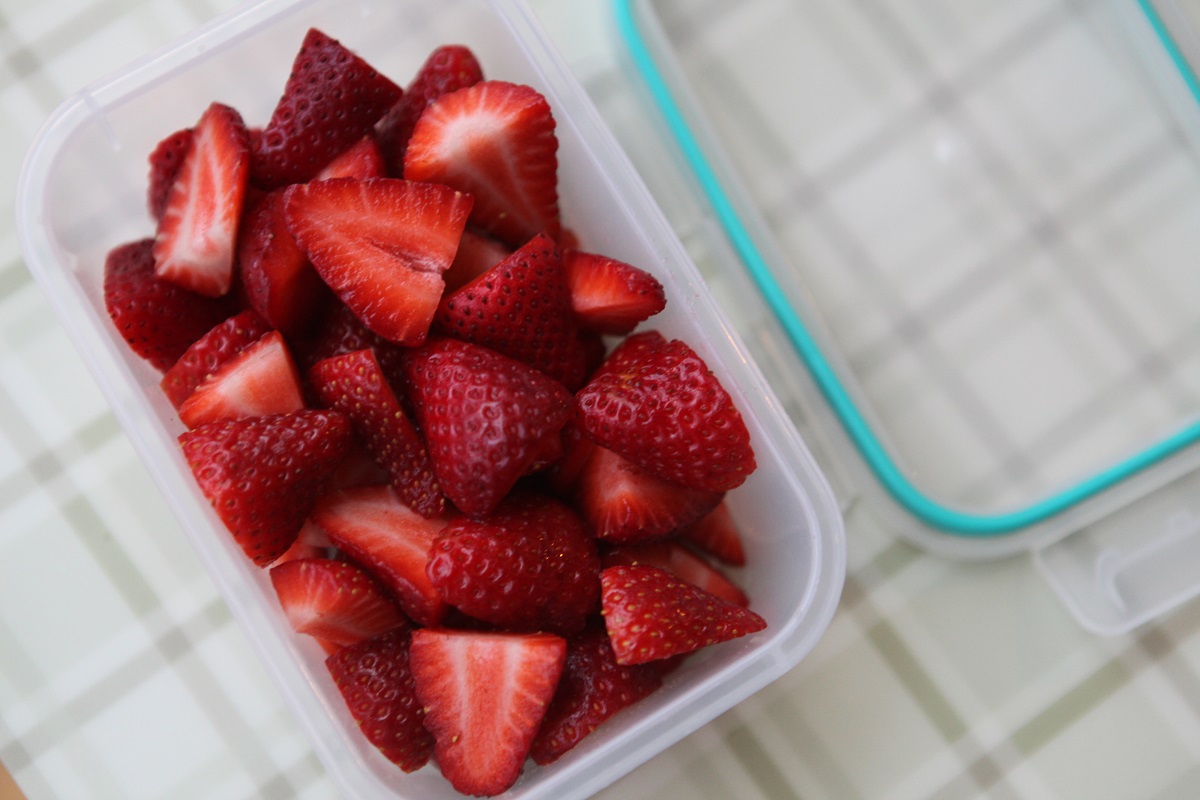






0 thoughts on “How To Store Fresh Strawberries In The Refrigerator”